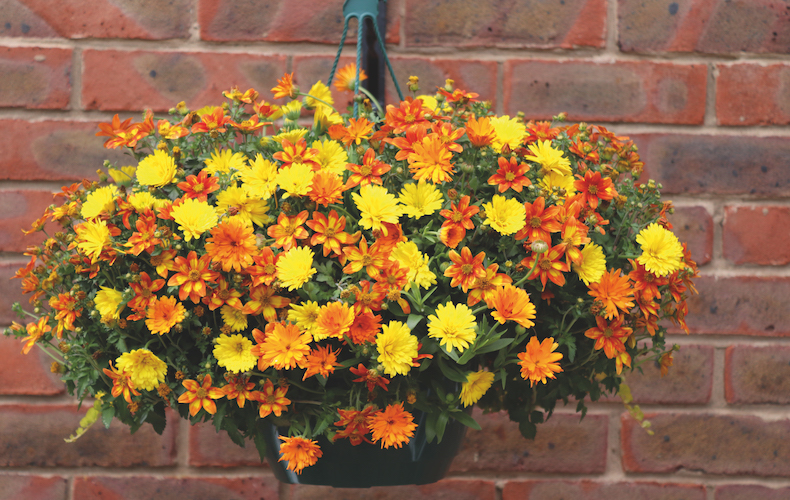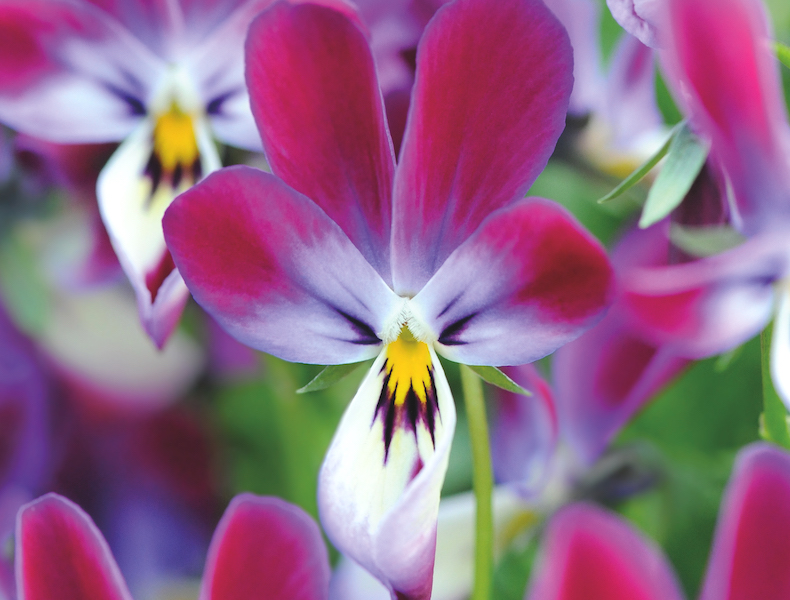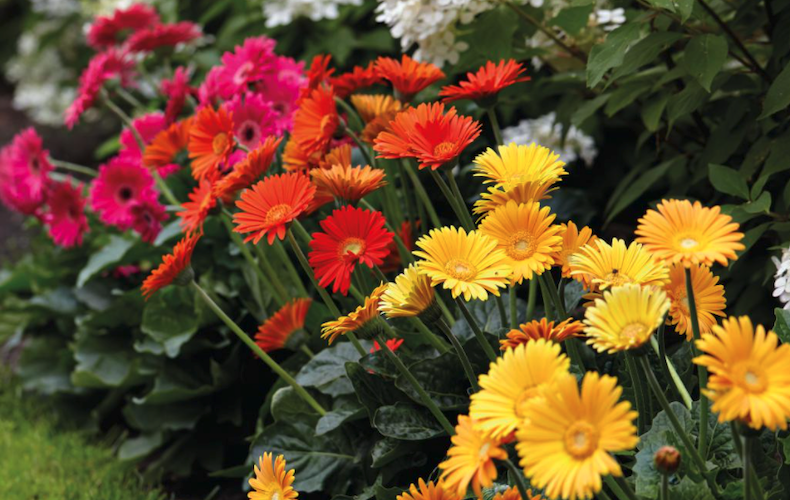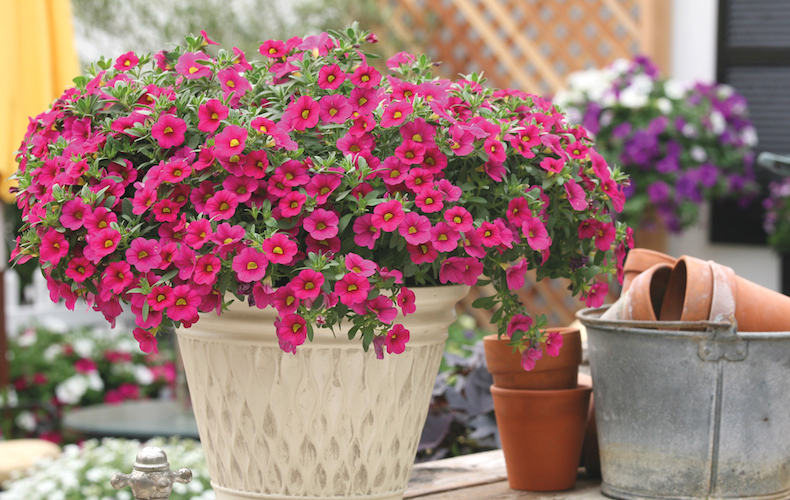How to grow bedding plants
Find out everything you need to keep your bedding plants growing strong with our comprehensive guide. Bedding plants are annuals or biennials which flower for one season and provide continuous colour for many months. From spring bedding plants such as forget-me-nots and wallflowers through to winter bedding plants like pansies, it’s possible to keep your garden in bloom almost all year round. Here’s how to grow and care for your spring, summer and winter bedding.
Where to plant your bedding plants

Bold colours make a strong visual impact at eye level
Image: Thompson & Morgan
Bedding plants are incredibly versatile and can be used in beds, hanging baskets, patio containers and window boxes. They’re also a cost-effective way to plug gaps in perennial borders with quick and easy colour. A fantastic choice for beginner gardeners, bedding plants allow you to be creative and try completely new designs each year. Here are some of our top tips:
- You can mix and match bedding plants to create a riotous show of colour but, for a more modern look, stick to a limited colour theme and simple design. Try a combination of warm oranges, yellows and reds. Alternatively, cool blues, purples and whites make a striking display too.
- Use summer bedding plants of different heights to create an informal, cottage garden style border. Position taller flowers such as sunflowers, Nicotiana and Cosmos towards the back, graduating to shorter bedding plants at the front such as petunias, marigolds and annual phlox.
- Add climbing bedding plants like sweet peas, morning glory and Ipomoea lobata for height and interest. Plant supports like teepee trellis, obelisks or bamboo canes can be positioned wherever required.
- Don't forget to incorporate foliage bedding plants which are invaluable for breaking up swathes of flowers. Senecio cineraria 'Silver Dust', the Castor Oil Plant (Ricinus communis ‘Impala’) and Coleus are excellent examples. Plants like Nigella (love-in-a-mist) provide feathery foliage with the added bonus of beautiful flowers too. You could even choose edible plants such as kale or Swiss chard ‘Bright Lights’ for a unique, multipurpose bed.
Summer and winter bedding plants

Viola and pansies are perfect winter bedding display plants
Image: Viola 'Bunny Ears' from Thompson & Morgan
Bedding plants can be raised from seed although buying trays of plugs is by far the quickest and easiest solution.
Summer bedding plant seeds are usually sown from February to April, while winter and spring bedding plants are sown from May to July ready to plant out in autumn. Most can be started in seed trays and then pricked out and grown on, but there are a few hardy annuals which need to be sown directly where they are to flower. These include borage, California poppy, Nigella ‘Moody Blues’ and poppies.
Summer bedding plug plants are dispatched in spring, and need potting up and growing-on in frost-free conditions before planting out in late May or early June. Winter bedding plants like polyanthus ‘Most Scented Mix’ and primrose ‘Husky Mixed’, are sent out in late summer and should be grown on and planted out once they've rooted into their pots or module trays.
How to plant bedding plants

Use bedding plants, such as Gerbera 'Sweet Collection'to highlight beds and borders
Image: Visions BV, Netherlands
Most bedding plants prefer a position in full sun but there are a few which will thrive in shade. See our 'Plants for Shade' article for a list of annual and biennial plants to try. Half-hardy bedding plants shouldn’t be planted out until all risk of frost has passed in late May. Follow these steps to plant out your bedding:
- Sprinkle a granular balanced fertiliser over the soil and lightly work in before planting.
- Mark out the design of your bed in the soil using sand to remember planting positions.
- Loosen plants from their pots or trays by tapping the pot or pushing plants up from the base.
- Using a trowel, make a deep enough hole for each plant so that the top of the root ball is just below the soil surface. Firm the plants in.
- Once all planting is completed, water the area well to settle the soil.
Caring for your bedding plants

Feed container grown bedding plants regularly for the best results
Image: Calibrachoa 'Million Bells Pink' Thompson & Morgan
Newly planted bedding plants should be watered regularly but, once established, they should only need deadheading from time to time and watering in prolonged periods of dry weather.
Plants grown in the ground and winter bedding plants won't require any extra feeding. Summer bedding plants in containers will normally have enough nutrients for 6 weeks of growth, but after this time they will benefit from a weekly feed with a balanced fertiliser. For more information on feeding plants in containers, read our 'Plants for containers' article.
We hope we’ve given you plenty of information to help you create your own stunning bedding plant displays! Visit our comprehensive hub page for info and expert advice on bedding plants, or read our 'Top ten winter bedding plants' article. Share your pictures with us via the #YourTMGarden.
Sign Up For Exclusive Special Offers




© 2025 Thompson & Morgan. All rights reserved. A division of Branded Garden Products Limited.
Sign up for exclusive offers!



